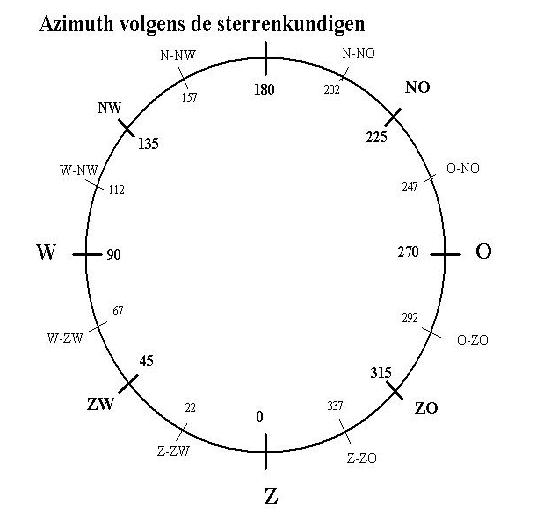Azimuth
The azimuth is the angle in the horizontal plane between the direction of an object and the geographic south (for astronomers). Often the geographic north is also taken as a reference point. This angle is expressed in degrees. Astronomers measure the azimuth clockwise.- An object in the south direction has an azimuth of 0°.
- An object in the west direction has an azimuth of 90°.
- An object in the north direction has an azimuth of 180°.
- An object in the east direction has an azimuth of 270°.

Elevation
The elevation or altitude is the angle between the direction of an object (the Sun) and the horizontal plane. This angle is expressed in degrees.- An object at the horizon has an elevation of 0°.
- An object at the zenith has an elevation of 90°.

This page is mainly intended for calendar printers. The zodiac used for the calculations does not correspond to the astronomical zodiac, but to 12 zones of 30 degrees along the ecliptic, measured from the position of the Sun at the spring equinox. The ecliptic is the plane of the Earth’s orbit around the Sun.
Actually, thirteen constellations currently cross the ecliptic: Aries, Taurus, Gemini, Cancer, Leo, Virgo, Libra, Scorpio, Opiuchus, Sagittarius, Capricorn, Aquarius and Pisces.
Because of the shift caused by the precession of the equinoxes, there is about a month’s difference between the actual passage of the Sun through these constellations and the dates mentioned below.
All times have been adjusted in Belgian local time (UTC + 1 hour in winter time and UTC + 2 hours in summer time).
| 2019 | 2020 | 2021 |
| 2022 | 2023 | 2024 |
| 2025 | 2026 | 2027 |
